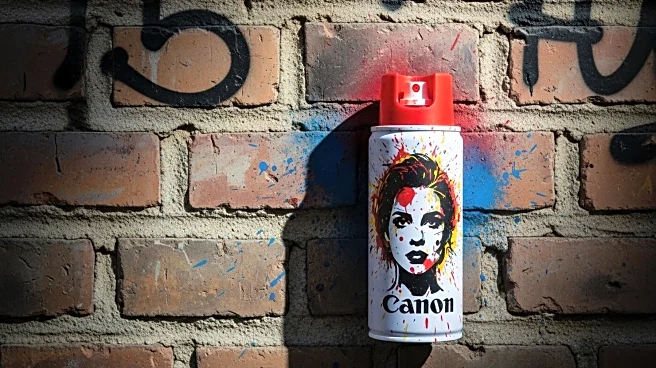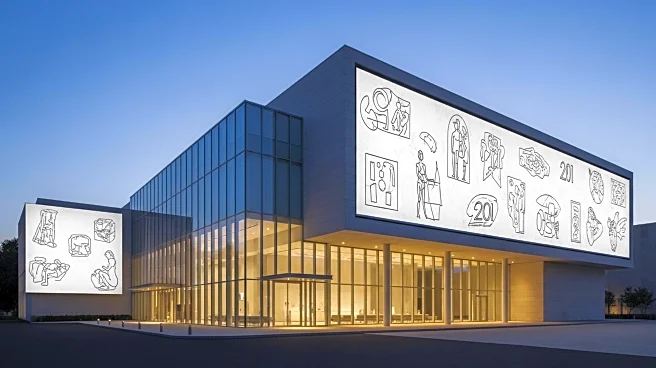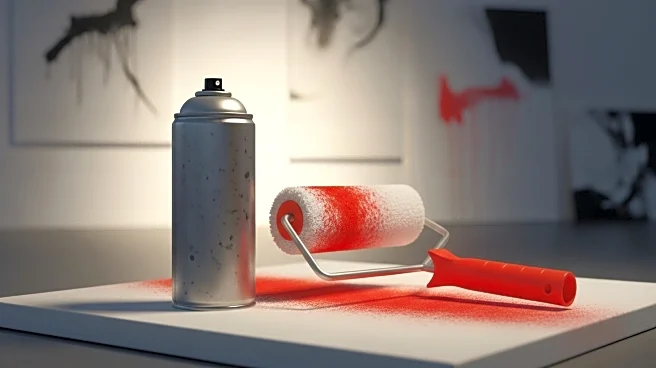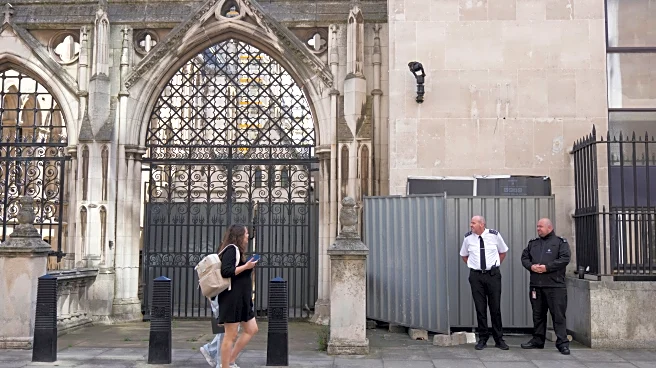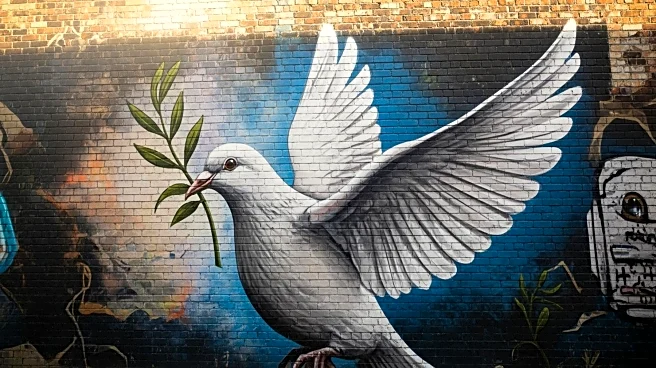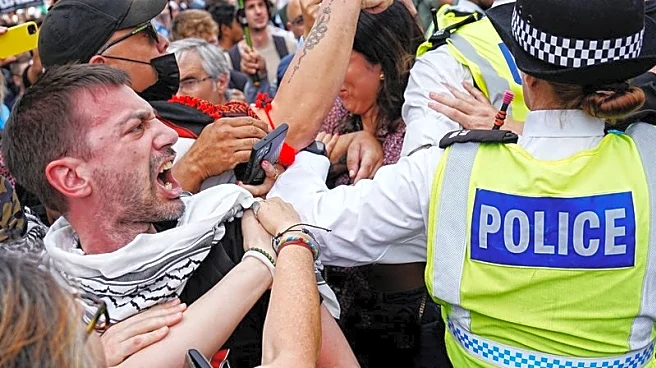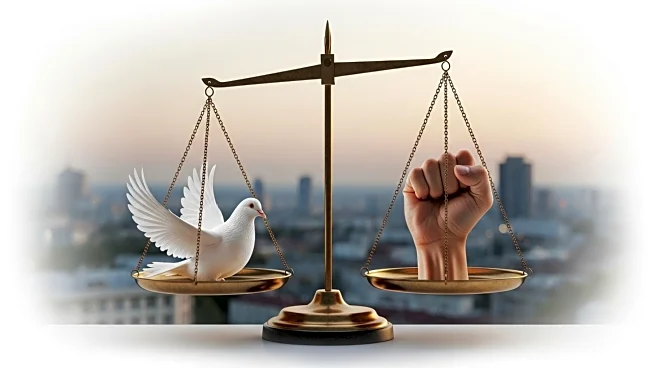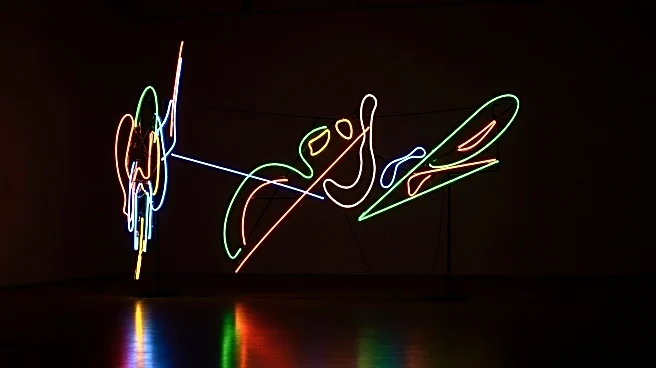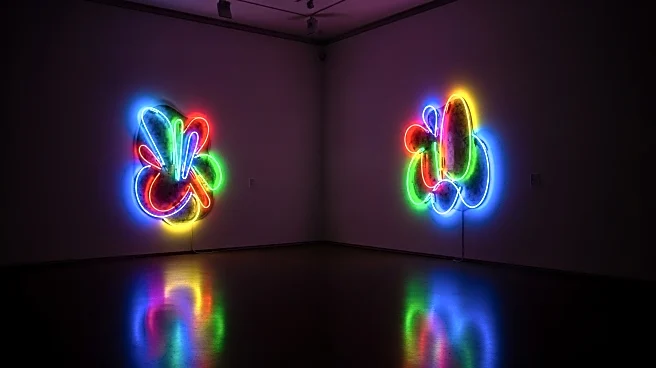What's Happening?
A mural by the renowned street artist Banksy was removed from the Royal Courts of Justice in London. The artwork depicted a protester with a blood-spattered placard and a judge wielding a gavel, interpreted as a commentary on recent arrests related to Palestine Action protests. The mural was considered criminal damage, prompting its removal due to the building's listed status, which requires maintaining its historical character. The Metropolitan Police are investigating the incident, while Banksy confirmed his involvement through social media.
Why It's Important?
The removal of Banksy's mural raises questions about the balance between artistic expression and legal obligations to preserve historical sites. Banksy's work often critiques government policies and societal issues, and this piece was seen as a political statement. The incident highlights ongoing tensions surrounding freedom of expression, especially in politically charged contexts. It also reflects the challenges faced by artists in navigating legal frameworks while attempting to convey social messages.
Beyond the Headlines
The mural's removal may spark debates on the role of street art in public discourse and its impact on political activism. Banksy's work often provokes thought and discussion, and this incident could lead to broader conversations about the intersection of art, politics, and law. Additionally, it may influence future decisions regarding the preservation of street art in historically significant locations.
